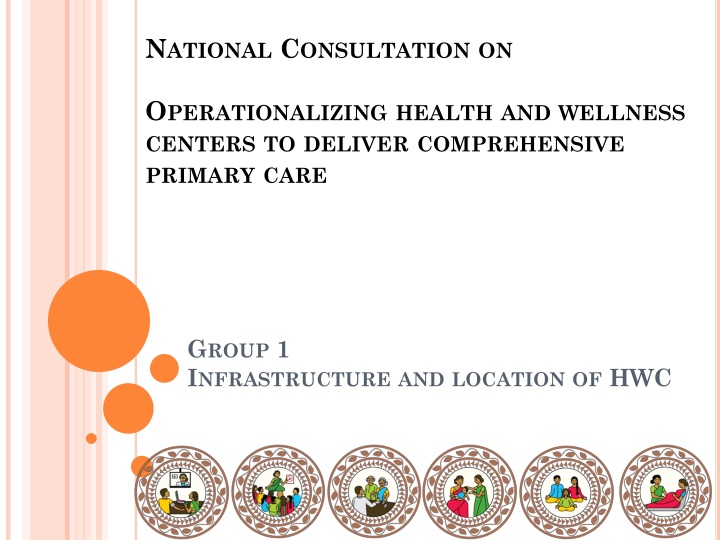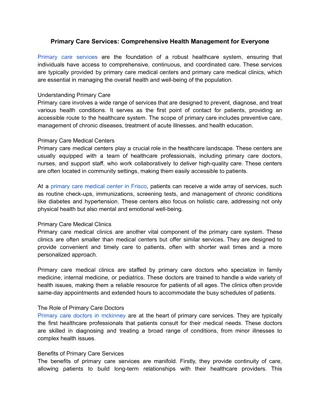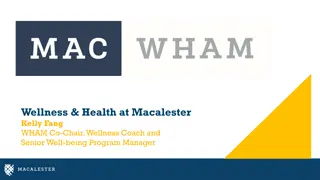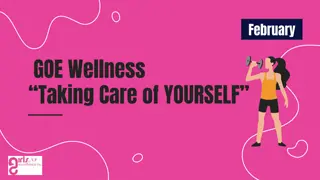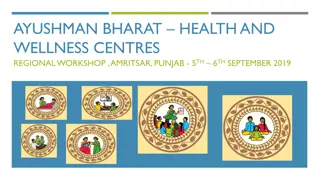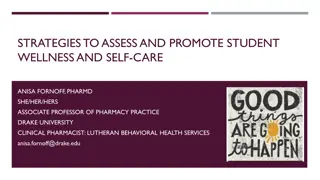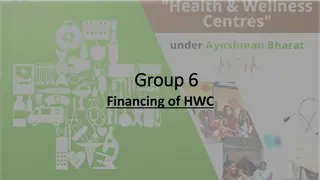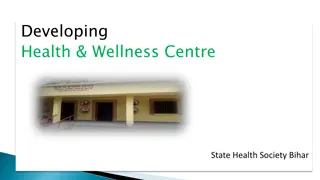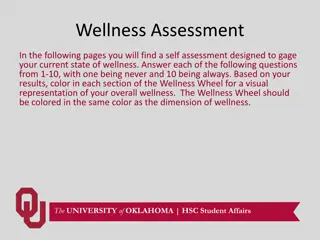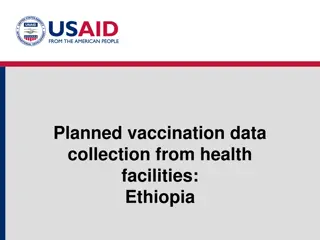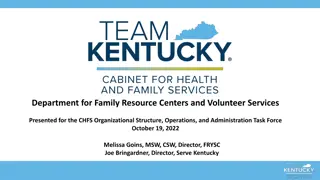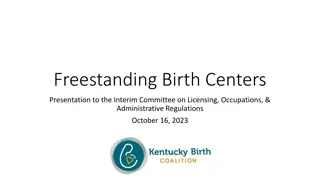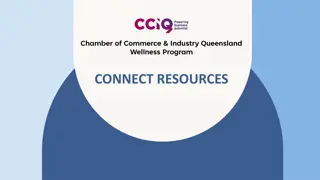Operationalizing Health and Wellness Centers for Comprehensive Primary Care: Challenges and Solutions
The national consultation focuses on the infrastructure, targets, selection criteria, challenges, parameters for smaller populations, and infrastructure costs in rural areas regarding operationalizing Health and Wellness Centers for better primary care delivery. It discusses strategies to achieve block saturation, criteria for district and block selection, and options to obtain land for new constructions.
Download Presentation

Please find below an Image/Link to download the presentation.
The content on the website is provided AS IS for your information and personal use only. It may not be sold, licensed, or shared on other websites without obtaining consent from the author.If you encounter any issues during the download, it is possible that the publisher has removed the file from their server.
You are allowed to download the files provided on this website for personal or commercial use, subject to the condition that they are used lawfully. All files are the property of their respective owners.
The content on the website is provided AS IS for your information and personal use only. It may not be sold, licensed, or shared on other websites without obtaining consent from the author.
E N D
Presentation Transcript
NATIONAL CONSULTATIONON OPERATIONALIZINGHEALTHANDWELLNESS CENTERSTODELIVERCOMPREHENSIVE PRIMARYCARE GROUP 1 INFRASTRUCTURE AND LOCATION OF HWC
TARGETS- COVERAGEOFSTATE Year Sub center PHCs UPHCs FY 2018-19 15% 15% 40% FY 2019-20 25% 25% 60% FY 2020-21 35% 35% FY 2021-22 25% 25%
Q 1: CRITERIATOSELECTDISTRICTAND BLOCK A. Districts: Aspirational district Health HPDs District with NPCDS Programme Scattered or in a cluster of a district- TN Experience B. Block Best block/blocks Infrstructure, HR, District Headquarter block Simultaneously plan for other blocks Consider availability of higher center for referrals 1. 2. 3. 4. 1. 2. 3.
Q2: CHALLENGESINACHIEVING BLOCKSATURATION Concept of block saturation - ?? Block saturation to be achieved in 2 year 1st Year SHCs 60 to 70% population simultaneously preparing for more difficult SHCs 2nd Year Remaining SHCs HR: Availability and recruitment Lack of infrastructure Accessibility in remote locations / geographical areas Plan to address challenges: Upgradation in phased manner Identifying infrastructural gaps and resource pooling to strengthen infrastructure Plan for 70% block saturation in first year Leverage using MMUs, bike ambulances Fixed day services
Q3: HWCSFORSMALLERPOPULATION - PARAMETERS Parameters: Population (minimum population in inaccessible areas -1000) Distance Travel time Service at the doorstep is the most convenient and cost effective model Consider mobile units Fixed day outreach services/ market day health services Additional incentives or Less targets Communication network
Q4: INFRASTRUCTURECOSTSIN RURALAREAS Pool grant of 7 lakhs rather than fixed 7 lakh/ Subcentre. There shall not be cap on 7 lakh if district wants to contribute. Onetime grant of 1 lakhs- For painting and branding Need additional resources for electricity, renewable energy, rain water harvesting, bio- medical waste Consider having tablets / computer for DVDMS / ECHO
Q5: OPTIONSTOOBTAINLANDFORNEW CONSTRUCTION Donations Government land with the Revenue department Panchayat s land Build vertical in land crunch situation Land Exchange Community forest right Purchase??
Q6: POSSIBLEMECHANISMSFOR RESOURCEMOBILIZATION CSR MLA/MP LAD instruction to be released from appropriate level MGNREGA Local bodies fund DC Discretionary funds NABARD Special funds like tribal affairs, minorities Donations from Philanthropists
Q7: PHCS ADDITIONALREQUIREMENTSIN ADDITIONTO IPHS Wellness room Power back up Geriatric care component Oral and Mental Health
Q8: LEVERAGING MOBILE MEDICAL UNITS FOR UNIVERSALCOVERAGE Using different types of Mobile units as per local geography including Outreach teams, Ambulance, bikes Using feedback communication from field sites for activating mobile units in case of urgency / emergency.
